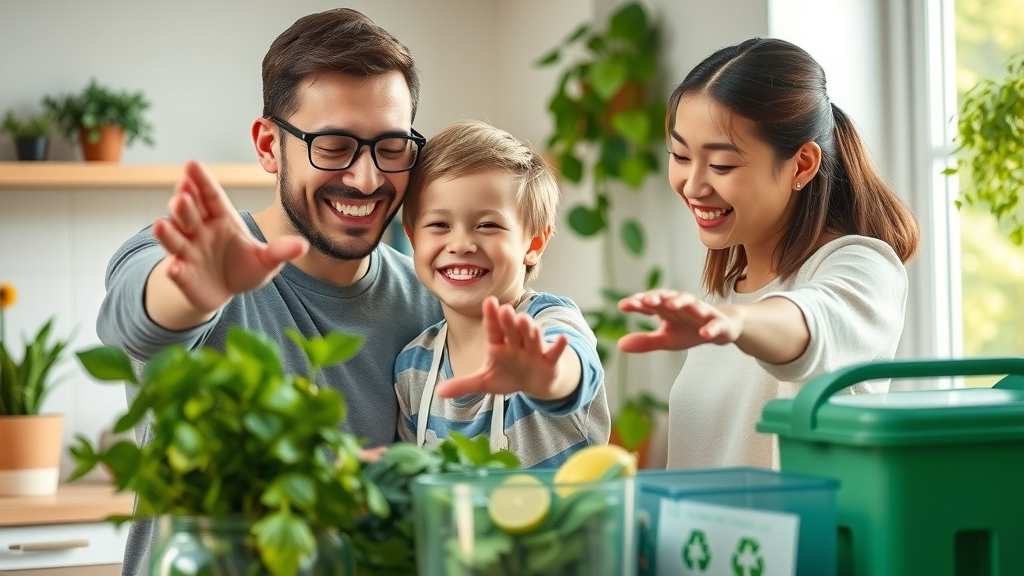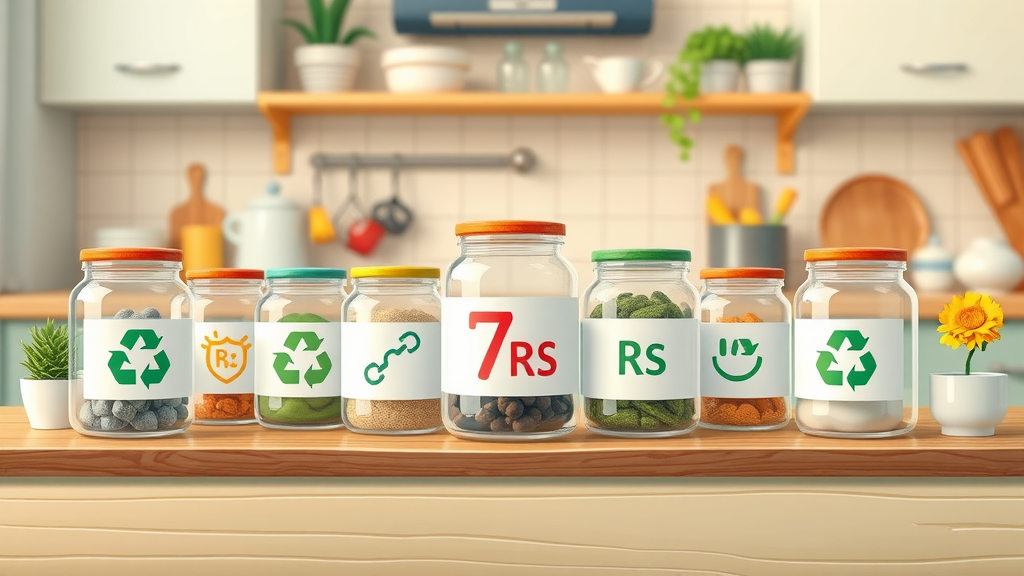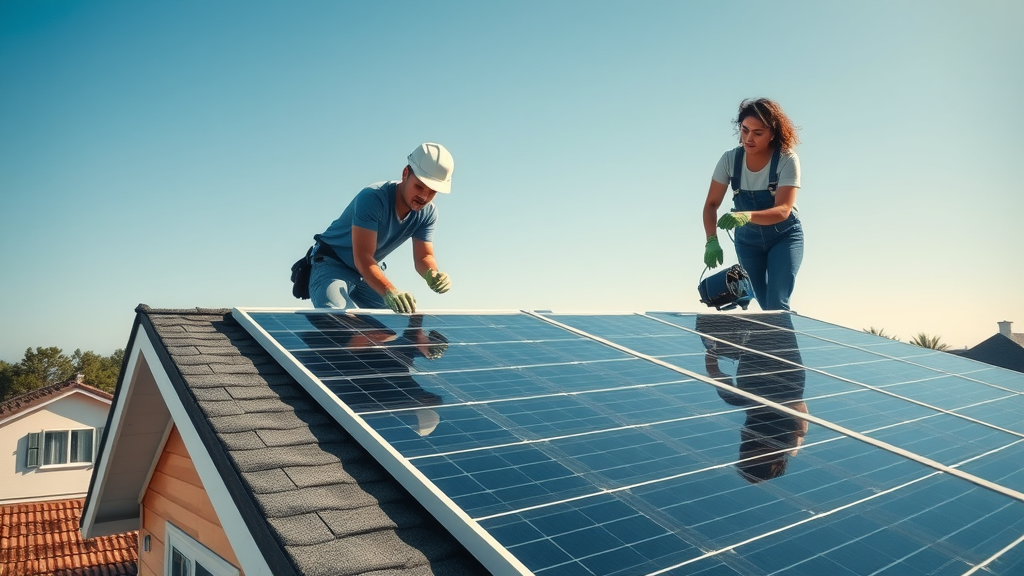Did you know that if everyone lived like the average American, we would need five Earths to support our consumption habits? This surprising statistic sets the tone for the urgent discussion around sustainable living . Whether you are new to the concept or ready to take your eco-friendly habits to the next level, this guide will give you the tools, insights, and real-world examples for crafting a more sustainable lifestyle. You’ll learn not just what sustainable living means, but why it matters—and how your everyday choices can save money, reduce food waste, and help preserve natural resources for future generations.

Rethinking Our Planet: The Urgent Need for Sustainable Living
The state of our planet is at a tipping point. Climate change, pollution, and resource depletion are accelerating due to unsustainable consumption, often linked to factors such as excessive fossil fuel use and throwaway culture. Around the world, rising greenhouse gas emissions, food waste, and plastic waste are threatening not only the environment but also our collective future. Adopting sustainable living is no longer a trend—it’s an imperative. When you choose to reduce your carbon footprint, save energy, and use fewer natural resources, you contribute to a healthier planet and show others that personal actions do matter.
The goal is not just to live more sustainably for our convenience but to ensure a stable world for future generations. Every plastic bag replaced, every meal made with less meat, and every effort to reduce food waste adds up to a significant impact. By thinking about our daily lifestyle choices, we begin to see that living sustainably is possible, practical, and essential for sustainable development. The journey toward a sustainable lifestyle starts with a simple shift in perspective.
"If everyone lived like the average American, we'd need five Earths to sustain our consumption." – Global Footprint Network
Sustainable Living Explained: What It Means and Why It Matters
Defining Sustainable Living: Beyond Daily Habits
Sustainable living is more than just recycling and switching off the lights. At its core, it’s about aligning our lifestyle choices with the understanding that the Earth’s resources are finite. This means being intentional about the products we buy, the energy we use, and even the food we eat. It extends to mindful decisions like reducing reliance on fossil fuels, minimizing food and plastic waste, and supporting renewable energy—choices that together reduce your environmental impact.
Unlike quick-fix solutions, embracing a sustainable lifestyle requires a holistic approach. It challenges us to rethink convenience, opting for durable over disposable (think reusable water bottle instead of single-use plastic bottle) and valuing experiences over objects. Sustainable living reaches beyond our homes and into our communities, influencing how we shop at the grocery store, travel, and support sustainable development goals globally. Your small adjustments, when combined with millions doing the same, can reshape economies and help safeguard future generations.

The Modern Sustainable Lifestyle: Practical Examples and Global Impact
Today, a sustainable lifestyle balances comfort, practicality, and planet-friendly choices. For example, families who compost food scraps, ride bicycles or use public transport, and switch to solar panels are prioritizing long-term well-being over short-term convenience. In offices and schools, simple changes like printing less, sharing rides, and eliminating single-use plastic bags further the mission. Worldwide, communities dedicated to sustainable living find creative solutions such as rooftop gardens, car-free zones, or bulk food purchasing to cut plastic waste.
The global effect is powerful. The United States alone accounts for a significant share of global carbon emissions and waste, so even small changes at home ripple outward to create international progress toward sustainable development . Every time we make sustainable choices—like supporting renewable energy, reducing meat consumption (meat production has a high environmental impact), or using less packaging—we help lower carbon footprints and advance the world toward meeting sustainable development goals.
Comparison of Conventional vs. Sustainable Living Choices
| Category | Conventional Approach | Sustainable Approach |
|---|---|---|
| Energy Consumption | High reliance on fossil fuels (coal, gas, oil) | Adoption of renewable energy (solar panels, wind, hydro) |
| Transportation | Driving single-occupant cars, frequent flights | Public transport, biking, carpooling, electric vehicles |
| Food Choices | Buying processed foods, high meat consumption, food waste | Plant-based meals, local produce, composting |
| Waste Management | Single-use plastics, landfill reliance | Recycling, reusing, reducing waste, composting |
| Water Use | Long showers, overwatering lawns | Water-saving fixtures, drought-resistant landscaping |

How Sustainable Living Reduces Your Carbon Footprint
Understanding Carbon Footprint in the Context of Sustainable Living
Your carbon footprint is the total amount of greenhouse gas emissions—primarily carbon dioxide—generated by your daily activities. Everything from driving a car powered by fossil fuels to eating food transported long distances contributes to this environmental impact. By consciously choosing to live sustainably , you directly reduce your carbon footprint. Examples include walking or using public transportation instead of a car, or opting for renewable energy sources like solar panels instead of coal-based electricity.
The connection between sustainable living and a reduced carbon footprint is clear: every eco-friendly choice, whether it’s avoiding plastic bags at the grocery store, or investing in energy-efficient appliances, cuts down on harmful emissions. Even small changes, such as using a reusable water bottle, eating less meat, or choosing local seasonal foods, add up to significant savings in carbon emissions over time. Understanding how your lifestyle choices stack up is the first—and often most powerful—step to meaningful change.

Top Everyday Actions for Lowering Your Environmental Impact
There are many practical ways to reduce your environmental impact as part of your daily routine. Some of the most effective include biking or using public transport instead of driving, switching to energy-efficient lighting, or supporting businesses that emphasize sustainable development goals. Composting food scraps, recycling packaging, and refusing single-use plastic bottles and bags dramatically reduces waste. Shopping with reusable bags and buying in bulk at the grocery store cuts down on unnecessary plastic packaging and food waste.
Advocating for community-wide changes, such as supporting renewable energy installations or local climate change initiatives, amplifies your efforts. Choosing to eat less meat (as meat production is energy and resource-intensive), planting a home garden, or joining local clean-up projects are small steps with outsized positive effects. The more households adopt these sustainable living habits, the faster we reduce greenhouse gas emissions and move towards a more environmentally friendly future.
Adopting a Sustainable Lifestyle: Key Steps for Individuals and Families
Essential Sustainable Living Practices for Every Household
Transforming your home into a model of sustainable living does not require massive sacrifice. Simple steps—like fixing leaky faucets or installing a water-saving showerhead—both help the environment and save money. Replace inefficient appliances with ENERGY STAR-rated options, and remember to unplug electronics when not in use. Composting, recycling, and reducing water usage are foundational practices that pay dividends for both the planet and your pocketbook.
Many families find that educating children through hands-on projects, such as growing vegetables or sorting recyclables, helps ingrain sustainable habits for the next generation. Adopt a “repair, don’t replace” mindset for household goods, and shop secondhand or swap with neighbors. Even sharing meals—reducing food waste and packaging—adds up in the collective fight against climate change and resource loss.

Simple Ways to Live Sustainably Without Sacrificing Comfort
Living sustainably doesn’t mean giving up comfort. Drastic changes aren’t required; in fact, many sustainable choices add to convenience and peace of mind. For instance, using programmable thermostats, LED lighting, and low-flow plumbing fixtures make your home more efficient without effort. Meal planning and freezing leftovers keep food waste to a minimum and ensure your budget stretches further. Shopping at local markets for fresh produce reduces your carbon footprint and often results in better nutrition.
Swapping disposable items for long-lasting alternatives—such as using cloth grocery bags, refillable water bottles, and glass storage containers—reduces plastic waste without loss of convenience. When you carpool or use public transportation, you not only cut down on gas expenses and carbon emissions, but often save time otherwise lost in traffic. Sustainable living, at its best, is about making smarter choices that benefit you, your family, and the wider world.
10 Easy Ways to Embrace a Sustainable Lifestyle at Home
- Switch to LED bulbs for all lighting needs
- Compost food scraps to reduce food waste
- Reduce single-use plastics: swap plastic bags for cloth ones
- Turn off and unplug electronics when not in use
- Cook with local, seasonal produce
- Use public transport, bike, or carpool whenever possible
- Install a programmable thermostat
- Collect rainwater for garden use
- Buy in bulk and avoid excess packaging
- Repair household items instead of replacing them
The 7 Rs of Sustainable Living: A Circular Economy in Action
The 7 Rs: Rethink, Refuse, Reduce, Reuse, Repair, Recycle, Rot
- Rethink: Question if you really need something before buying
- Refuse: Turn down unnecessary items, especially single-use plastics
- Reduce: Buy less, choose quality, and consume mindfully
- Reuse: Repurpose jars, bags, and containers to avoid waste
- Repair: Fix broken items instead of discarding them
- Recycle: Sort paper, plastic, glass, and metals for proper recycling
- Rot: Compost food and yard waste to return nutrients to the earth

Ways to Implement the 7 Rs into a Sustainable Lifestyle
Putting the 7 Rs of sustainable living into everyday practice requires more creativity than effort. For example, say “no” to excess packaging and single-use plastic bags at the grocery store and bring your reusable bag instead. Rethink your buying habits by investing in durable goods instead of cheap, disposable products. Reuse containers and bottles, and turn worn-out clothing into cleaning rags or craft projects. By repairing electronics, bicycles, and clothing, you extend their lifespan and keep them out of landfills.
Composting (rot) is an easy win: kitchen food scraps, coffee grounds, and yard waste can all be transformed into nutrient-rich soil, reducing landfill loads and contributing to healthier gardens. Recycling properly—making sure plastics, paper, and glass are clean and sorted—actually increases the efficiency of recycling programs. Every step matters, and when families and communities work together, the results drive us closer to a circular, waste-free economy focused on sustainable development.
Achieving Sustainable Development Goals Through Everyday Actions
Aligning Personal Choices with Global Sustainable Development
Achieving the United Nations Sustainable Development Goals (SDGs) may seem daunting, yet each personal action counts. Simple decisions, such as buying fair-trade items, conserving water, or volunteering at community gardens, directly advance goals like responsible consumption, climate action, and clean water for all. Every purchase you make, and every resource you conserve, is a step toward a more just, resilient, and compassionate world.
Aligning your personal sustainable living decisions with global development goals ensures that efforts in your home or neighborhood ripple outward. Supporting educational initiatives, sustainable local businesses, and environmental advocacy contributes to lasting change. The everyday actions of millions—when coordinated and consistent—have the power to transform societies, economies, and the future of the planet.

Combating Climate Change with Sustainable Living Choices
Reducing Greenhouse Gas Emissions: The Role of Individual Action
Climate change is not an abstract threat—it’s a daily reality influenced by our habits and choices. Greenhouse gas emissions from transport, energy production, and agriculture are the primary drivers of global warming. While governments and corporations play a crucial role, individual choices collectively define our climate future. Avoiding food waste, reducing energy use, and supporting renewable energy sources like solar panels all help cut carbon emissions .
Even small efforts—like tree planting, using energy-efficient appliances, or walking instead of driving—reduce the demand for fossil fuels and shrink your environmental impact. Each time you opt for public transportation, recycle correctly, or switch to plant-rich meals, you decrease the release of greenhouse gases. Over time, the cumulative effect of millions choosing sustainable living will help mitigate climate change and create a more stable environment for everyone.

Minimizing Environmental Impact with Renewable Technologies
Solar Panels and Sustainable Energy Solutions for Homes
Renewable technologies, especially solar panels, are revolutionizing how households contribute to environmental sustainability. Installing a solar panel system on your home reduces reliance on fossil fuels, lowers utility bills, and often can increase property value. Modern solar panels are efficient, affordable, and easy to integrate into homes, making them one of the most accessible sustainable living upgrades.
Beyond solar panels, energy solutions such as wind turbines for communities, and geothermal heating for neighborhoods, further support the transition away from high-emissions energy sources. Choosing renewable energy providers, even if you can’t install your own solar panels, is a powerful way to promote market demand and push entire regions toward sustainable, carbon-neutral futures. Embracing these technologies is a proactive step to shrink your environmental impact and serve as a model for sustainable development in your community.

People Also Ask: Sustainable Living Answers
What is meant by sustainable living?
Sustainable living refers to making lifestyle choices that reduce your negative impact on the environment and promote a balanced relationship with the planet. This means conserving natural resources, cutting down on waste, and supporting social and economic systems that are kind to people and nature. Ultimately, sustainable living is about ensuring that today’s habits don’t compromise the needs of future generations .
What are the 7 Rs of sustainable living?
The 7 Rs stand for Rethink, Refuse, Reduce, Reuse, Repair, Recycle, and Rot. This framework encourages individuals and families to minimize waste, make responsible consumer choices, and adopt a circular approach to material use. When you practice the 7 Rs, you help lower your environmental impact and support a sustainable lifestyle at all stages.
How can we live a sustainable life?

You can live a sustainable life by consuming less, supporting renewable energy, practicing mindful waste management, and aligning your daily habits with sustainable living principles. Prioritize reusing items, recycling responsibly, opting for public transportation or biking, and supporting businesses committed to environmentally friendly practices. Over time, these choices lower your carbon footprint and lead to a lasting positive impact.
What are the three requirements for living sustainability?
The three requirements for living sustainably are conserving natural resources, supporting social equity, and making economic choices that prevent harm to people and the planet. This means acting with awareness in what you buy, use, and discard, ensuring your choices benefit both society and the natural world. Together, these pillars create a foundation for a resilient, sustainable future.
Frequently Asked Questions on Sustainable Living
Common sustainable living challenges and solutions
- Challenge: Limited access to recycling facilities Solution: Seek community recycling points, organize neighborhood drives
- Challenge: Higher initial costs for sustainable products Solution: Focus on long-term savings, buy secondhand, or DIY when possible
- Challenge: Resistance from family or friends Solution: Lead by example, offer practical tips, share success stories
- Challenge: Finding time for sustainable habits Solution: Start small: prioritize one or two changes, make a routine
- Challenge: Confusion about what’s recyclable Solution: Consult local recycling guidelines, use apps or labels for clarity

Your Role in a Sustainable Future: Inspiring Action for Sustainable Living
"The greatest threat to our planet is the belief that someone else will save it." – Robert Swan
By making small, thoughtful changes in our homes, businesses, and communities, we can unlock a brighter, more sustainable future —one simple action at a time. Remember, your choices are powerful, your example is inspiring, and together, we truly can save the Earth.
 Add Row
Add Row  Add
Add 




Write A Comment